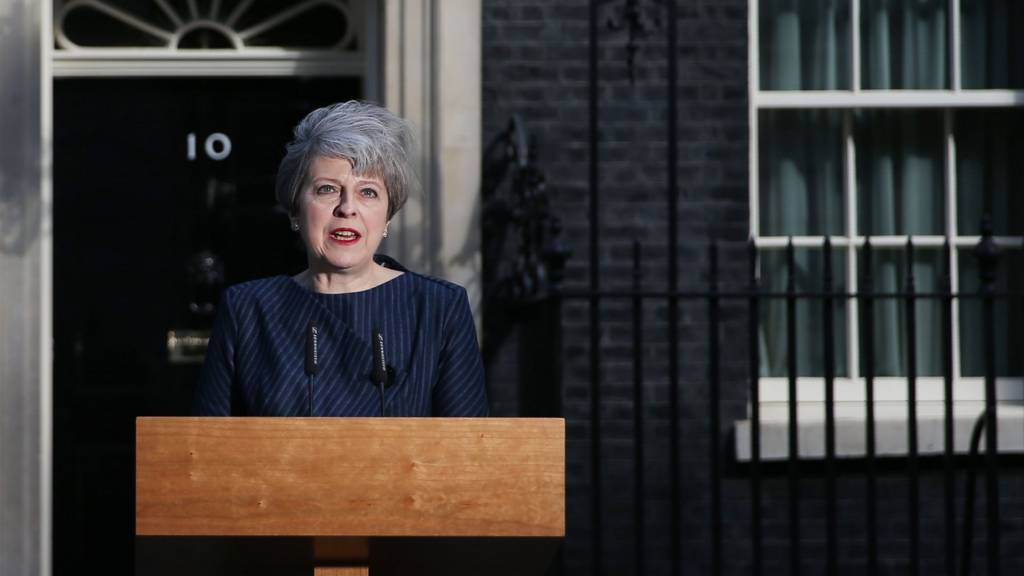Forget your normal political allegiances, there is only one issue that matters in this snap election. Theresa May says she has called the June 8 election to win a strong new mandate for taking Britain out of the EU and that is the prism through which the results will be judged. So how should you vote if, like most Londoners, you want Britain to either stay in the EU or maintain as many ties with it as possible?
The answer will largely depend on which constituency you live in, as there will be different strategies depending on which parties are strongest in your area.
 The polls confirm that many voters are totally disillusioned with Labour under Jeremy Corbyn, at least partly because of the mixed messages and half-hearted leadership he has offered those who want to remain in the EU. Many will respond by backing the Liberal Democrats or the Greens, the only fiercely pro-EU parties standing in London.
The polls confirm that many voters are totally disillusioned with Labour under Jeremy Corbyn, at least partly because of the mixed messages and half-hearted leadership he has offered those who want to remain in the EU. Many will respond by backing the Liberal Democrats or the Greens, the only fiercely pro-EU parties standing in London.
But that urge to punish Labour for its poor performance on Brexit runs up against the fact that a collapse of Labour on June could leave the Tories dominant and claiming a mandate for a hard line approach to Brexit. The best national outcome for Remainers that is even vaguely possible would be a Labour-Lib Dem coalition with the Lib Dems putting enough steel into Labour’s spine to get it to stand up against Brexit, hopefully under a new leader more committed to the Remain battle. The clearest anti-Brexit message that London could send would be to elect more Lib Dems and fewer Tories than in 2015, when London chose 45 Labour MPs, 27 Tories and one Lib Dem. Most of those London seats are now held by comfortable margins so the most that the capital could plausibly contribute is to strip a handful of seats away from the Tories before waiting nervously for the rest of the country to save us from Brexit.
What to do?
VOTE LIB DEM WHERE THEY HAVE A CHANCE OF WINNING
 In a perfect electoral system Remain supporters could switch their votes to the Lib Dem, the largest party to have openly opposed Brexit and backed a second referendum on the issue. The electoral map and the “first past the post” voting system mean that many of those votes would be wasted because the Lib Dems are only competitive in certain areas such as the leafy south-west suburbs of London.
In a perfect electoral system Remain supporters could switch their votes to the Lib Dem, the largest party to have openly opposed Brexit and backed a second referendum on the issue. The electoral map and the “first past the post” voting system mean that many of those votes would be wasted because the Lib Dems are only competitive in certain areas such as the leafy south-west suburbs of London.
In a worst-case situation Remain voters who switch from Labour to the Lib Dems could split the Remain vote enough to allow the pro-Brexit Tories, or even UKIP, to win the seat.
The 2015 backlash against the Lib Dems for their role in David Cameron’s government saw them tumble from seven seats in London to just one and it would certainly strengthen the hand of Remainers if the Lib Dems staged a revival that was not based purely on poaching Labour seats.
In London the Lib Dems and Greens should consider cooperating in the half-dozen seats where the Greens reached double-digit support in 2015, to avoid fracturing the Remain vote even further.
TORY SEATS THAT COULD GO LIB DEM
The Lib Dems should have no trouble adding several seats to their one 2015 victory, Carshalton and Wallington on the far southern ring of the metropolitan area.
In its southwest suburban heartland there are four seats won by the Tories in 2015 that could move back to the Lib Dems with the support of Remainers. They are Twickenham, where the Tories beat the Lib Dems 41.3% to 38%, with 11.5% voting Labour; Kingston & Surbiton (Tories 39.2%, Lib Dems 34.5%, Labour 14.5%); Sutton and Cheam (Tories 41.5%, Lib Dem 33.7%, Labour 11.1%) and Richmond Park, which the Lib Dems regained in last year’s by-election and should hold now that Zac Goldsmith has left politics.
Beyond those seats it is an uphill battle for the Lib Dems, as their next strongest performance in a Tory seat was coming third in Wimbledon with just 12.7%. The Tory vote of 52.1%is almost certainly out of reach but Labour’s tally of 26% could be overhauled.
LABOUR SEATS THAT COULD GO LIB DEM
The key for Remain voters is to back the Lib Dems where there is little danger of the seat falling to a Brexit party.
A strong candidate is Bermondsey & Old Southwark, where Labour beat the Lib Dems 43.1% to 34.3% in 2015, with the Tories way behind on 11.8%. Another is Hornsey & Wood Green, where Labour scored 50.9% to the Lib Dems’ 31.8%, with the Tories in single figures.
After that it becomes very difficult for the Lib Dems. Their next strongest performance in as labour seat in 2015 was a third-place finish in Islington South & Finsbury with just 10.9%, well behind Labour’s 50.9%.
BUT BE CAREFUL…
Switching from Labour to the Lib Dems could see the Tories win seats where they are close behind Labour and the Lib Dems have little chance of winning.
If Ealing Central & Acton saw a net switch of just 275 votes from Labour to the Lib Dems that would allow the Tories to come out on top. The Conservatives would also grab the Labour seats of Brentford & Isleworth and Ilford North on swings of less than 600 votes, and Enfield North and Hampstead & Kilburn if 1150 Labour voters in each seat switched to the Lib Dems. Other areas where anti-Brexit Labour voters could accidentally elect a Tory are Westminster North, Harrow West, Tooting, Hammersmith and Brent North.
SEND A TOUGH MESSAGE TO LABOUR
 Protest votes are guaranteed, and one MP in the firing line is the Labour Brexiteer Kate Hoey, a sports minister under Tony Blair. An estimated 78% of voters in her Vauxhall electorate are Remain supporters and many are angry with her. In 2015 Hoey held the seat with 53.8% to the Tories’ 27.3%, the Greens’ 7.6% and the Lib Dems’ 6.9%. That Lib Dem vote had collapsed from 25.1% at the previous election so there is plenty of scope for it to bounce back this time around.
Protest votes are guaranteed, and one MP in the firing line is the Labour Brexiteer Kate Hoey, a sports minister under Tony Blair. An estimated 78% of voters in her Vauxhall electorate are Remain supporters and many are angry with her. In 2015 Hoey held the seat with 53.8% to the Tories’ 27.3%, the Greens’ 7.6% and the Lib Dems’ 6.9%. That Lib Dem vote had collapsed from 25.1% at the previous election so there is plenty of scope for it to bounce back this time around.
Labour voters could safely register a protest vote against their leader Jeremy Corby in Islington North because Corbyn’s 2015 vote of 60.2% was miles ahead of the Tories, on 17.2%. Many will consider it worth taking the small risk of losing the seat in order to rebuke Corbyn for his tepid support for Brexit. There are two anti-Brexit options: the Greens, who scored 10.2% last time and the Lib Dems with 8.1%.
For his ally Emily Thornberry (50.9%) in neighbouring Islington South & Finsbury, the Lib Dems are the best anti-Brexit option with 10.9% last time, ahead of the Greens on 7.6%. The Tories pose little threat on 22.2%.
Voters wanting to send a similar message to Diane Abbot in Hackney North & Stoke Newington
may be wise to back the Greens, who posted their best 2015 London performance in this seat, with 14.6% to the Lib Dems’ 5%. Abbott was comfortable on 62.9% with the Tories (14.7%) posing little threat.
Labour’s Brexit spokesman Keir Starmer is a less likely target for an anti-Corbyn backlash as he is not that close to Corbyn and is widely seen as a potential replacement leader but if any Remainers in his electorate of Holborn & St Pancras do want to give him a clip over the ear the best vehicle may be the Greens, who beat the Lib Dems 12.8% – 6.5% last time, well behind Starmer on 52.9% and the Tories on 21.9%.
BACK LABOUR AHEAD OF THE TORIES
Few London seats were finely balanced in 2015 but one that Labour could pick up on even a small anti-Brexit swing is Croydon Central, where the Tory lead of 43% to 42.7% translated into just 165 votes with no other candidate in double figures.
A swing of about 5% from the Tories to Labour would deliver five more seats: Hendon, Harrow East, Enfield & Southgate, Finchley & Golders Green, and Chipping Barnett, the seat of the arch-Brexiteer Theresa Villiers. Villiers was one of just six Cabinet secretaries who defied David Cameron by coming out in favour of Brexit during the referendum campaign, and she has since urged a “hard Brexit” or withdrawal from both the single market and customs union. She beat Labour by 48.6% to 34.1% in 2015. The Greens and Lib Dems gained a combined 9.2% so this is definitely a seat where Labour is the best remain option.
Of the other pro-Brexit Cabinet secretaries, Ian Duncan Smith holds Chingford & Woodford Green with 47.9% to 28.8% while the Lib Dems and Greens shared 9.7% in 2015, and Boris Johnson won Uxbridge & South Ruislip by a slightly more comfortable 50.2% to 26.4%, with the Lib Dem-Green votes totalling 8.1%.
MAKE SURE UKIP DON’T WIN A SEAT
 Just as Remainers will be trying to send a message on June 8, Brexiteers will be considering their own strategies, and some may decide to back UKIP. Any sort of breakthrough for Farage’s party would be an utter disaster for Remainers, so EU supporters in certain seats who voted Labour or Tory last time should definitely NOT swing their support to the Lib Dems this time.
Just as Remainers will be trying to send a message on June 8, Brexiteers will be considering their own strategies, and some may decide to back UKIP. Any sort of breakthrough for Farage’s party would be an utter disaster for Remainers, so EU supporters in certain seats who voted Labour or Tory last time should definitely NOT swing their support to the Lib Dems this time.
Dagenham & Rainham is the best example. Labour’s Jon Cruddas was elected with 41.4% of the vote last time, holding off UKIP on 29.8% and the Tories on 24.4%. If a decent slice of those Labour voters shifted this time around to the Lib Dems, who gained only 1.7% of the vote in 2015, it would be easy to see UKIP pinching the seat, especially if Tory Brexiteers decided to send their own message by backing UKIP.
Another nervous Labour MP will be Margaret Hodge in Barking, whose 57.7% is not as secure at it seems against UKIP’s 22.2% Margaret Hodge 57.7 Lib Dems 1.3
UKIP’s best chance of taking a Tory seat is Hornchurch & Upminster, where the Tories won 49% to UKIP’s 25.3% in 2015. Other strong areas for UKIP are Romford, Bexleyheath & Crayford, and Orpington.
by Peter Wilson
The post Election: How to Vote in London Against Brexit appeared first on Felix Magazine.
No comments:
Post a Comment